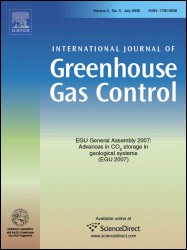A note on good research practice: Dooley (2013)
April 8, 2013 Filed under Blog, Featured, Publishing, Reviewing, Writing
 An editorial in the International Journal of Greenhouse Gas Control is entitled “A note on good research practice.”
An editorial in the International Journal of Greenhouse Gas Control is entitled “A note on good research practice.”
Dooley states:
By far the most common issue we editors of this journal are seeing in terms of poor scientific practice in submissions is the failure to appropriately cite the work of others. Sadly, we see numerous submissions per month that contain what is unequivocally outright plagiarism.
He further lays out a framework for reducing plagiarism in submitted articles.
…following are five commonsense suggestions that apply to all named authors, who, as noted above, share the responsibility for sound research practices. All authors of a given paper must be willing to stand by the totality of the paper. This does not mean that all must be equally knowledgeable about all aspects of the paper but it does mean that, before submitting a paper to this or any other journal, all authors must discuss the paper and its contents and make sure that all understand what is in the paper and all must understand the methods and the conclusions.
1. Understand that as an author you have a clear and unequivocal responsibility to faithfully and accurately report what work is novel in a submission and what knowledge in the submission is derived from the work of others.
2. Understand that as an author you also have a clear and unequivocal responsibility to place the research being presented in your manuscript within the broader body of existing knowledge. Citing the prior art in your field is mandatory; it should not be seen as being burdensome. Rather, it is an opportunity to more effectively communicate your research by contextualizing it within the extant body of knowledge, which helps experts in your field as well as the broader technical community to understand the work being presented. “Citing the prior art in your field” also carries with it an obligation to cite the work of others, unless you are the rare person who is sole source of all that is known in a given field.
3. If you have multiple related papers out to different journals, please communicate this to the journal editor, to peer reviewers, and to the eventual readers of the submission, assuming that the article is published. Informing readers that the paper they are reading is materially related in this or that manner to other research papers from the same research group helps readers understand the totality of the knowledge you and your colleagues are bringing forward. Failing to inform editors and readers of the linkages to other work often leads to misunderstandings and often times accusations of duplicative or what is sometimes called “fractional publication.”
4. Be proactive when it comes to fostering good scientific practice by asking questions of your colleagues, mentoring younger scientists and by making use of the many fine resources, including a number of thought-provoking case studies, designed to foster dialogue and learning as to what are good scientific practices (see for example the wealth of information at COPE, 2013 and Elsevier, 2012).
5. If issues arise or if you simply want a second opinion on how to resolve a particularly tricky issue, reach out and communicate with the journal’s editors. Communication between editors and authors is often a powerful tool for quickly resolving issues. A lack of communication often can transform a misunderstanding into an intractable problem that negatively impacts a surprising large number of people. It is important to state that this “communication” is a two-way street. My fellow editors and I are and intend to remain human, and are therefore subject to making errors. Please speak up and – to the extent you can – substantiate your concerns if you believe we are in error.
Journals will be increasingly making use of services that detect plagiarism. Indeed, the International Journal of Greenhouse Gas Control is already doing so.


